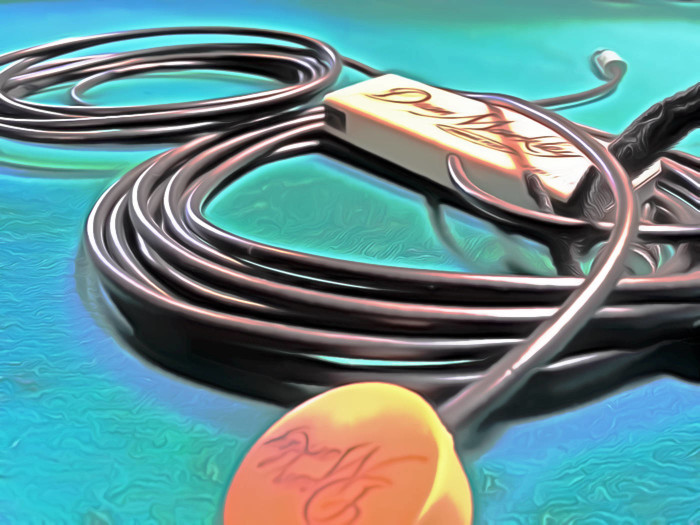I am of the opinion that a couple of removable pickup options are very helpful things for a tech to own.
Please Remember:
The opinions expressed are mine only. These opinions do not necessarily reflect anybody else’s opinions. I do not own, operate, manage, or represent any band, venue, or company that I talk about, unless explicitly noted.

 Want to use this image for something else? Great! Click it for the link to a high-res or resolution-independent version.
Want to use this image for something else? Great! Click it for the link to a high-res or resolution-independent version.I’m not trying to zing anybody, or speak disrespectfully about (or toward) any musician, but… I swear that there’s an unwritten rule regarding players of acoustic guitars. This unwritten rule apparently states that acoustic guitars without pickups MUST be sold to players who use a delicate technique.
When I encounter an acoustic player who has no kind of pickup for their guitar at all, the chances are alarmingly high that the player will have a “jazzy” style (quiet), or be playing achingly tender love songs, fingerstyle (really danged quiet). Further, this situation will occur in a bar or other casual setting where the audience WILL NOT SHUT UP. So, you point a mic at that big, resonating reflector of an instrument, do your best to get enough level for both the house and the deck, field the inevitable “Can’t you turn it up?” questions, and brace for the feedback problems which are almost sure to pounce.
The whole situation is basically crap for everyone.
So, if you’re an audio-human, I urge you: Buy a few more things for your workbox/ goody kit/ whatever you call it. You know, that collection of adapters, hand tools, cables, and mics that you carry around to help you out in a pinch. (You do have one, right?)
What To Buy
The few more things you should buy are a “no tools” soundhole pickup, a contact pickup, and an active DI box for each. The whole grouping can cost you less than $175, and its worth in unsuckifying your life is enormous. The peace of mind you get in knowing that your gain-before-feedback can be considerably more manageable is, itself alone, enough to justify the expenditure. Having these items handy is about as close as I think any of us can get to having a magic rabbit that can be pulled from a hat.
So, what’s it all for? Well…
1) The soundhole pickup is for acoustic guitars with metallic strings. You want one that has the semi-spongy “inserts” on the sides, so that it can fit a range of soundhole sizes. You also want one with humbucking coils. I personally have a couple of single coil models, and while I’m fine with them, their susceptibility to electronic interference is rather higher than I’d prefer.
2) Someday, you will encounter a guitar player who uses nylon strings. On that day, you will learn to love your contact pickup. As far as I can tell, a contact pickup is nothing more exotic than a piezo element in an attractive housing. The pickup should have some tacky putty pre-applied to the housing, so that you can stick the thing directly to an instrument. If not, poster putty is cheap and essentially the same thing. Finding a really good placement for the pickup can take some doing, but sticking it behind the bridge and being ready to wield a parametric EQ is a good guess if you don’t have time on your side. Also, this pickup ISN’T JUST FOR GUITARS! It can work on a lot of otherwise troublesome instruments. I have been very relieved to have a contact pickup on hand for the odd cello that comes through. I also want to try using one on a musical saw, the next time I have a chance.
3) The active DI is the missing link that ensures your pickups will play nicely with the console. I like passive pickups because there are no batteries to have die at an inconvenient time, but the drawback – especially with piezo-based contact mics – is that the pickup output impedance is higher than the mountains of Nepal. If the pickup were a water pump, it would be capable of very healthy pressure…but that pressure would be coming through a pipe with a diameter comparable to a novelty soda-straw. Acceptable voltage transfer and circuit damping requires a very healthy amount of impedance at the direct box’s input side, and that’s what an active unit gives you. Be aware that “expensive” doesn’t necessarily mean “active.” It’s entirely possible to spend $200 on a passive unit and not have sufficiently high input impedance. Look first at what the unit is, and then look at the price.
Put all this together, and you’ll have a very handy survival kit for players without pickups of their own. Yes, you DO need to ask before using the pickups. Especially in the case of the contact unit, it’s rather impolite to just tack it onto an instrument without getting permission. If you’re denied permission, then you’re stuck with using a mic and toughing out the set – but if you’ve got these extra bits on hand, having to tough it out won’t be your fault.